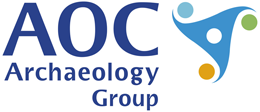Data from a Archaeological Monitoring at Hurst DMV, Kenilworth, Burton Green, Warwick, Warwickshire, 2019-2023 (HS2 Phase One)
High Speed Two Ltd., AOC Archaeology Group, Connect Archaeology, 2023. https://doi.org/10.5284/1124407. How to cite using this DOI
Data copyright © High Speed Two Ltd. unless otherwise stated
This work is licensed under a The Open Government Licence (OGL).
Primary contact
High Speed Two Ltd.
2 Snowhill
Queensway
Birmingham
B4 6GA
United Kingdom
Tel: 08081 434 434
Resource identifiers
- ADS Collection: 5626
- DOI:https://doi.org/10.5284/1124407
- How to cite using this DOI
Introduction
![NW facing section of small pit [108]. Copyright HS2 Ltd.](images/1N20HURAM_C3J_DSC_0220.jpg)
Project Summary
This collection comprises of reports, images, spreadsheets, gis and site record data from archaeological monitoring works, carried out by Connect Archaeology between 11th November 2019 and 8th July 2020 at Hurst Deserted Medieval Village (DMV). The need for archaeological monitoring of the construction of the haul road and the associated works compound was determined on the basis that there was potential for archaeological remains dating to the prehistoric, Romano-British and medieval periods, as identified through previous investigations outlined in the Project Plan.
The aim of the archaeological monitoring was to identify, examine and record any archaeological remains revealed by the works to ascertain their contribution to HERDS Objectives (as far as is reasonably practicable).
The specific aims of the excavation were:
- To identify in situ remains or deposits associated with Mesolithic, Neolithic and Early Bronze Age periods;
- To identify evidence of Neolithic and Bronze Age monuments which may allow for a comparison to be made with known monument further south within the Avon valley;
- To identify any evidence which could further the understanding of the form and location of Late Bronze Age and Iron Age settlement, how the landscape was organised and population, mobility and subsistence strategies;
- Identify, excavate and record any other funerary evidence and this may contribute to the understanding of Romano-British funerary practices within the surrounding area;
- Identify any evidence which would further the understanding of the development and organisation of RB settlement and agriculture, as well as the possibility of continuity of settlement or transition into the early medieval period;
- Identify medieval agricultural and small-scale industrial features. Dating evidence from such features could aid understanding of the development of field types and how land use and farming practices were affected by settlement change.
The archaeological monitoring aimed to meet the following GWSI: HERDS Specific Objectives:
- Identifying settlement location and developing models for settlement patterns for the Mesolithic, Neolithic and Early Bronze Age?
- Does a lack of visibility of Neolithic and Bronze Age monuments reflect genuine area distinctiveness, or is this due to variation in geology or investigative techniques?
- Can we identify regional patterns in the form and location of Late Bronze Age and Iron Age settlements across the route, and are there associated differences in landscape organisation and enclosure?
- Investigate the degree of continuity that existed between Late Bronze Age and Iron Age communities in terms of population, mobility and subsistence strategies;
- Investigate the changing nature of funerary rites in the Late Iron Age and Romano-British periods. What evidence is there that the adoption of the new rites or changes in existing practices are the result of the movement of people, contact with new ideas, or even new religions?
- Assess the evidence for regional and cultural distinctiveness along the length of the route in the Romano-British period, with particular regard to the different settlement types encountered along the route;
- Identify evidence for late Roman occupation and attempt to identify any continuity in settlement patterns between the end of the Romano-British period and the early medieval period;
- Identify the location of Middle to Late Saxon settlement, explore processes of settlement nucleation and understand the development of associated field types and agricultural regimes, identify patterns of change within medieval rural settlement from the 11th to mid-14th century.
Re-Use Value Statement
The archaeological monitoring undertaken as part of the haul road construction successfully resulted in the exposure, excavation and recording of two post-medieval or modern pits within Area 1. Plough scarring across the area also indicates agricultural use of the land throughout this period; however, the features offer limited further knowledge about post-medieval and modern activity in the area. No in situ archaeological remains were identified which relate to the Mesolithic, Neolithic, Bronze Age, Iron Age, Romano-British, or medieval periods. This means the works are limited in contributing to the GWSI: HERDS identified for the archaeological monitoring.
Unstratified finds, however, do indicate some activity within the wider area dating to the Mesolithic, Neolithic and Early Bronze Age periods. The small assemblage of medieval and post medieval artefacts indicates agricultural activity dating to this period within the monitored area, though these, and the earlier prehistoric, finds do not offer a meaningful contribution to the wider historical context of the area.







